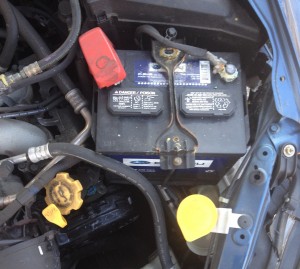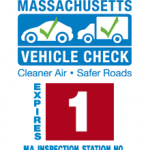Starting around 1996, our automobiles entered the computer age. Sensors and microprocessors took up the task of monitoring, and in some cases adjusting, many of the functions of the engine, brakes, and other components that previously acted only as set by a manual tool and whose failure only became evident when the car stopped working.
This new electronic monitoring system also changed the way in which periodic state inspections for safety and emissions are done. Whereas previously the garage would stick a hose up the tailpipe to suck in fumes and analyse it for pollution, then visually inspect the lights, turn signals, etc., now much of that information can be transferred digitally from the car computer’s memory via a data port. With the right tool you can access much of this data yourself – for instance, I have a device from Automatic Labs that stays plugged into my car’s data port and communicates to my iPhone via Bluetooth!
All of this is great… until something happens to your car’s battery:
Unfortunately, your car’s computer system differs in one very significant way from your desk or laptop computer: it has volatile memory!
Volatile memory is like where your computer keeps that document you are writing BEFORE you hit “save” – when you save something on your computer it is written to your hard drive, which retains everything when you power off your computer (else you would need to reinstall the operating system and apps every time you booted up). But when you are writing along and suddenly the power goes out or you leave it running but the battery dies you lose everything that you didn’t save.
Since your car has no “hard drive” for the data it collects while you are driving, if the car battery is disconnected for any length of time (and the shop doesn’t hook up a temporary electrical supply): bye-bye driving data that is necessary for your car to pass a computer-data-dependent test!
If you can’t plan ahead to get an inspection before your car’s battery will be disconnected for some repair, then you must drive it for at least 50 miles before it accumulates enough data to pass the inspection. So when I get my repaired car back later today I’ll need to run a quick road trip since my inspection sticker expires at the end of the month!
Followup 04/25/14: currently my car (2007 Subaru Legacy) is also driving like it has never had a tuneup – very rough when accelerating. My research, and the collision shop, says that it needs to re-tune itself. So I took it out on about 30 miles of city and highway driving last night, and will see if it “tunes up” over the weekend.
Followup 04/26/14:: Further update: engine revving is mostly normal after 90 miles of driving in the computer, it passed state inspection, and the dealer found the excess noise is from a transmission mount the collision shop failed to repair.


